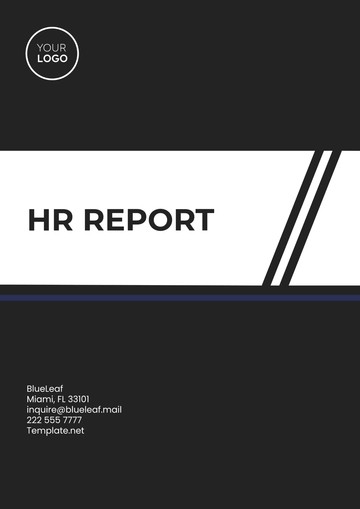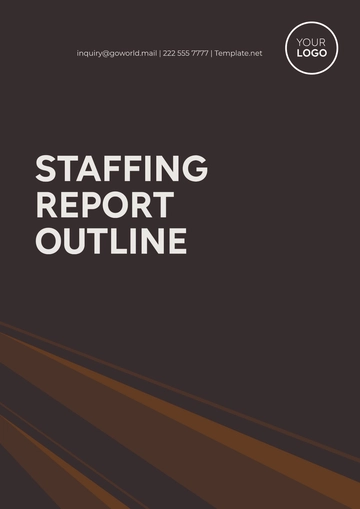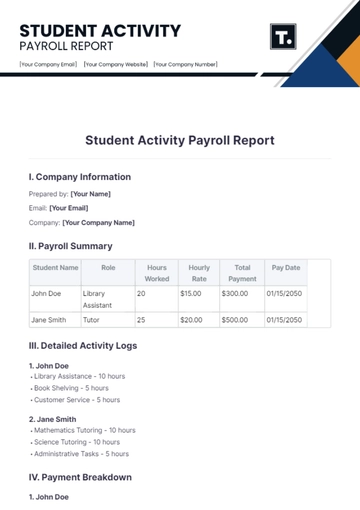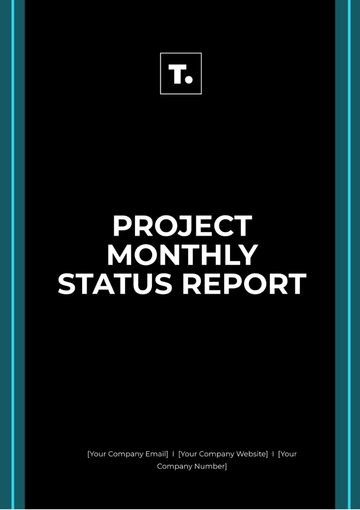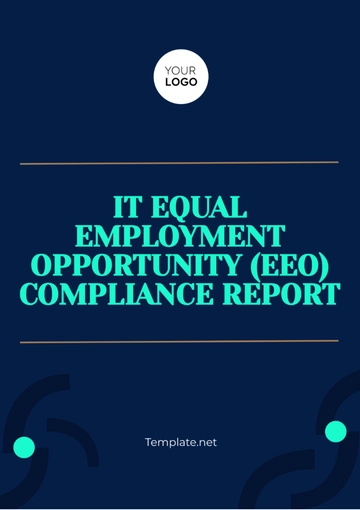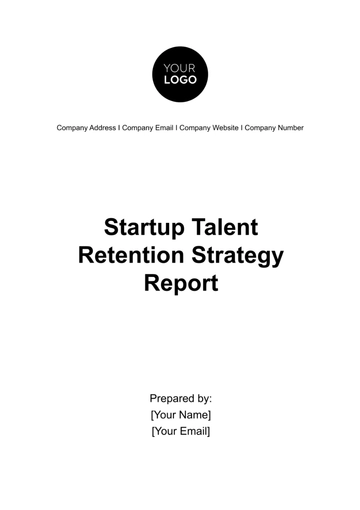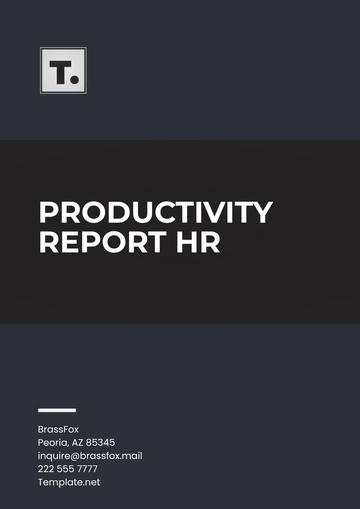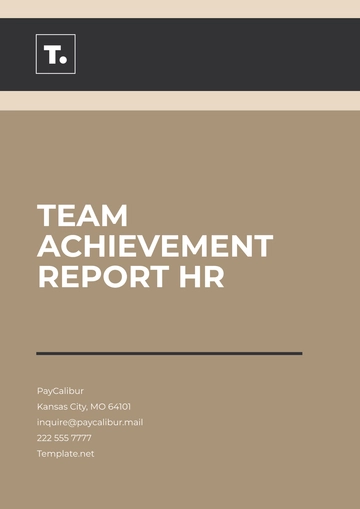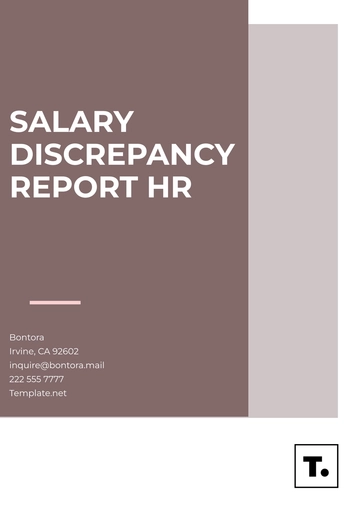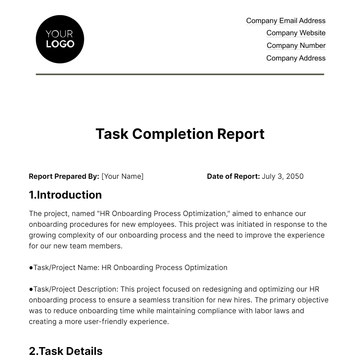Free Startup Talent Retention Strategy Report
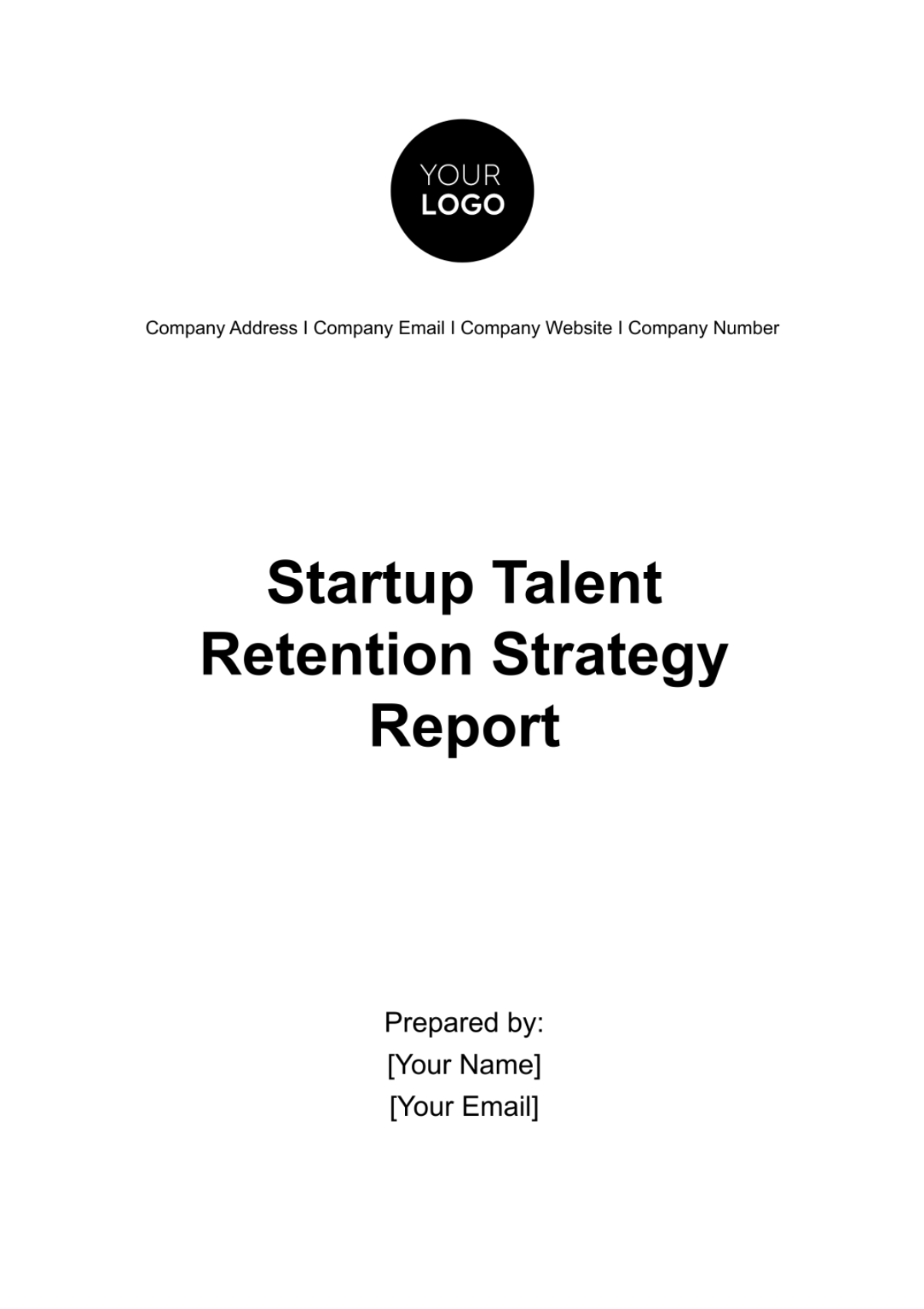
Executive Summary
The success of [Your Company Name] relies heavily on the talent and expertise of its workforce. In today's competitive market, retaining top talent is essential for sustaining growth and achieving long-term success. This Talent Retention Strategy Report outlines the approach [Your Company Name] will take to attract, engage, and retain talented employees. By implementing a comprehensive retention strategy, [Your Company Name] aims to foster a positive work culture, enhance employee satisfaction, and reduce turnover rates.
1. Introduction
In today's dynamic business environment, attracting and retaining top talent is crucial for the success of any organization, particularly startups. High employee turnover can significantly impact productivity, morale, and ultimately, the bottom line. Therefore, [Your Company Name] recognizes the importance of implementing a robust talent retention strategy to retain its most valuable asset: its people.
2. Current Landscape
Before embarking on the development of a comprehensive talent retention strategy, it is imperative to gain a thorough understanding of the current landscape within [Your Company Name]. This chapter will delve into various aspects of the company's workforce, including demographics, turnover rates, and factors influencing attrition.
Demographics: Understanding the composition of [Your Company Name]'s workforce is essential for tailoring retention initiatives to meet the diverse needs of employees. This includes analyzing demographic factors such as age, gender, ethnicity, educational background, and tenure within the company. By gaining insights into the demographics of the workforce, [Your Company Name] can identify potential areas of underrepresentation or disparities and develop targeted strategies to address them.
Turnover Rates: Employee turnover rates provide valuable insights into the stability and health of [Your Company Name]'s workforce. By analyzing turnover data over time, [Your Company Name] can identify trends, patterns, and areas of concern. High turnover rates in specific departments or among certain demographic groups may indicate underlying issues that need to be addressed, such as dissatisfaction with compensation, limited growth opportunities, or poor management practices.
Factors Influencing Attrition: In addition to examining turnover rates, it is essential to identify the factors contributing to employee attrition within [Your Company Name]. These factors may vary widely depending on the unique circumstances and culture of the company but could include inadequate compensation, lack of career advancement opportunities, poor work-life balance, ineffective leadership, or a negative organizational culture. By pinpointing the root causes of attrition, [Your Company Name] can develop targeted retention initiatives aimed at mitigating these factors and improving employee satisfaction and engagement.
3. Key Drivers of Employee Retention
Employee retention is influenced by a myriad of factors, ranging from compensation and benefits to career development opportunities and company culture. In this chapter, we will explore the key drivers of retention and their significance within the context of [Your Company Name].
Compensation and Benefits: Competitive compensation and benefits packages are fundamental for attracting and retaining top talent. Employees expect to be fairly compensated for their contributions and to receive benefits that meet their needs, such as health insurance, retirement plans, and paid time off. [Your Company Name] must ensure that its compensation and benefits offerings are competitive within the industry to retain high-performing employees.
Career Development Opportunities: Employees are more likely to stay with [Your Company Name] if they see opportunities for growth and advancement. Providing access to training programs, mentorship opportunities, and career paths demonstrates [Your Company Name]'s commitment to supporting employees' professional development and investing in their long-term success. By offering avenues for career advancement, [Your Company Name] can retain top talent and cultivate a pipeline of future leaders within the organization.
Work-Life Balance: Achieving a healthy work-life balance is increasingly important for employees, particularly in today's fast-paced and demanding work environment. [Your Company Name] can promote work-life balance by offering flexible work arrangements, telecommuting options, and wellness programs that support employees' physical, mental, and emotional well-being. By prioritizing work-life balance, [Your Company Name] can improve employee satisfaction and reduce burnout and turnover rates.
Company Culture: A positive company culture characterized by open communication, teamwork, respect, and inclusivity is essential for retaining employees. [Your Company Name] must foster a supportive and inclusive work environment where employees feel valued, appreciated, and empowered to contribute their ideas and perspectives. By cultivating a positive company culture, [Your Company Name] can enhance employee engagement, loyalty, and retention.
In the subsequent chapters, we will delve into specific retention initiatives aimed at addressing these key drivers and creating a workplace environment where employees feel motivated, engaged, and committed to [Your Company Name]'s success.
4. Retention Initiatives
In this chapter, we outline various retention initiatives that [Your Company Name] will implement to enhance employee satisfaction and engagement. These initiatives are designed to address key drivers of retention and create a supportive work environment where employees feel valued and motivated to contribute to the company's success.
Retention Initiative | Description |
|---|---|
Competitive Compensation and Benefits | Ensure that salaries and benefits packages are competitive within the industry to attract and retain top talent. This may include offering competitive salaries, health insurance, retirement plans, and other fringe benefits. |
Career Development Opportunities | Provide opportunities for professional growth and advancement through training programs, mentorship initiatives, and clearly defined career paths. This demonstrates [Your Company Name]'s commitment to investing in employees' long-term success. |
Work-Life Balance | Promote a healthy work-life balance by offering flexible work arrangements, telecommuting options, and wellness programs. This helps reduce employee burnout and turnover rates while enhancing overall satisfaction and well-being. |
Positive Company Culture | Foster a positive work environment characterized by open communication, teamwork, respect, and inclusivity. [Your Company Name] will prioritize building a supportive culture where employees feel valued, appreciated, and empowered. |
Recognition and Rewards | Implement employee recognition programs to acknowledge and reward outstanding performance and contributions. This boosts morale, motivation, and job satisfaction, while reinforcing desired behaviors and fostering a culture of appreciation. |
Employee Feedback Mechanisms | Establish channels for employees to provide feedback and suggestions, such as surveys, suggestion boxes, and regular one-on-one meetings. This demonstrates [Your Company Name]'s commitment to listening to employees' concerns and ideas. |
These retention initiatives will form the foundation of [Your Company Name]'s talent retention strategy, supporting the company's efforts to attract, engage, and retain top talent in a competitive market.
5. Implementation Plan
The successful implementation of [Your Company Name]'s talent retention strategy requires careful planning and execution. This includes:
Identifying Key Stakeholders: Designating individuals or teams responsible for overseeing the implementation of retention initiatives and monitoring progress.
Setting Clear Objectives: Establishing specific, measurable, achievable, relevant, and time-bound (SMART) objectives for each retention initiative.
Allocating Resources: Allocating sufficient resources, including budget, time, and personnel, to support the implementation of retention initiatives.
Communication and Training: Communicating the retention strategy to all employees and providing training and support to managers and HR personnel involved in its implementation.
Monitoring and Evaluation: Establishing metrics and KPIs to track the effectiveness of retention initiatives and conducting regular evaluations to assess progress and make adjustments as needed.
6. Monitoring and Evaluation
Continuous monitoring and evaluation are essential for assessing the effectiveness of [Your Company Name]'s talent retention strategy. This involves regularly reviewing key metrics, such as turnover rates, employee satisfaction scores, and engagement levels, and gathering feedback from employees through surveys, focus groups, and one-on-one discussions. Based on the findings, [Your Company Name] will make data-driven decisions to refine and improve the retention strategy over time.
7. Conclusion
In conclusion, [Your Company Name] recognizes the critical importance of retaining top talent in today's competitive market. By implementing a comprehensive talent retention strategy that addresses the key drivers of retention and aligns with the company's values and objectives, [Your Company Name] aims to create a workplace where employees feel valued, engaged, and motivated to contribute to the company's success.
Appendices
Appendix A: Sample Employee Satisfaction Survey
Appendix B: Retention Initiative Timeline
Appendix C: Budget Allocation for Retention Initiatives
For further information or to provide feedback, please contact [Your Name] at [Your Email] or visit [Your Company Website].
- 100% Customizable, free editor
- Access 1 Million+ Templates, photo’s & graphics
- Download or share as a template
- Click and replace photos, graphics, text, backgrounds
- Resize, crop, AI write & more
- Access advanced editor
Unlock the potential of your startup's workforce with Template.net's Startup Talent Retention Strategy Report Template. This customizable and editable document, optimized with our AI editor, empowers startups to develop robust strategies for retaining top talent. From assessing employee satisfaction to implementing growth opportunities, streamline your approach to talent retention. Cultivate a dynamic and engaged workforce, ensuring your startup's continued success.
You may also like
- Sales Report
- Daily Report
- Project Report
- Business Report
- Weekly Report
- Incident Report
- Annual Report
- Report Layout
- Report Design
- Progress Report
- Marketing Report
- Company Report
- Monthly Report
- Audit Report
- Status Report
- School Report
- Reports Hr
- Management Report
- Project Status Report
- Handover Report
- Health And Safety Report
- Restaurant Report
- Construction Report
- Research Report
- Evaluation Report
- Investigation Report
- Employee Report
- Advertising Report
- Weekly Status Report
- Project Management Report
- Finance Report
- Service Report
- Technical Report
- Meeting Report
- Quarterly Report
- Inspection Report
- Medical Report
- Test Report
- Summary Report
- Inventory Report
- Valuation Report
- Operations Report
- Payroll Report
- Training Report
- Job Report
- Case Report
- Performance Report
- Board Report
- Internal Audit Report
- Student Report
- Monthly Management Report
- Small Business Report
- Accident Report
- Call Center Report
- Activity Report
- IT and Software Report
- Internship Report
- Visit Report
- Product Report
- Book Report
- Property Report
- Recruitment Report
- University Report
- Event Report
- SEO Report
- Conference Report
- Narrative Report
- Nursing Home Report
- Preschool Report
- Call Report
- Customer Report
- Employee Incident Report
- Accomplishment Report
- Social Media Report
- Work From Home Report
- Security Report
- Damage Report
- Quality Report
- Internal Report
- Nurse Report
- Real Estate Report
- Hotel Report
- Equipment Report
- Credit Report
- Field Report
- Non Profit Report
- Maintenance Report
- News Report
- Survey Report
- Executive Report
- Law Firm Report
- Advertising Agency Report
- Interior Design Report
- Travel Agency Report
- Stock Report
- Salon Report
- Bug Report
- Workplace Report
- Action Report
- Investor Report
- Cleaning Services Report
- Consulting Report
- Freelancer Report
- Site Visit Report
- Trip Report
- Classroom Observation Report
- Vehicle Report
- Final Report
- Software Report
